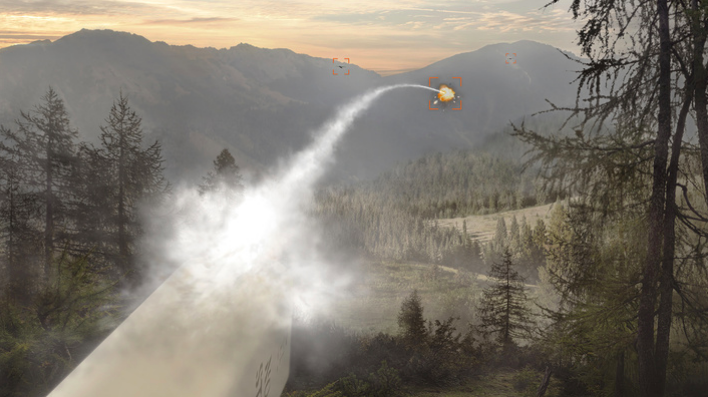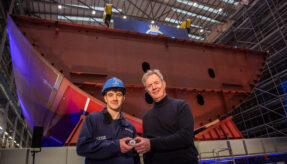
BAE Systems, Inc. has successfully tested APKWS laser-guided rockets in precision strike tests against Class 2 Unmanned Aerial Systems (UAS) at Yuma Proving Grounds.
The 2.75” test rockets combined standard M151 warheads and Mk66 motors with APKWS precision guidance kits and a newly developed proximity fuze – enabling them to engage and destroy airborne drones at a fraction of the cost of traditional counter-UAS (C-UAS) strike capabilities.
“Unmanned Aerial Vehicles of all sizes are a growing threat increasingly deployed by adversaries around the globe,” said Greg Procopio, director of Precision Guidance and Sensing Systems at BAE Systems. “The flexibility and affordability of APKWS rockets make them a good choice for taking out small, tactical military drones. Our successful test strikes demonstrate the creativity of our engineers and an innovative and economical use of existing DoD materiel to address an emerging threat.”
BAE Systems conducted test fires and engineering tests to develop a capable system for U.S. armed forces and allies. The key to APKWS rockets’ counter-UAS capability is the innovative proximity fuze jointly developed by L3Harris Technologies and Technology Service Corporation.
The fuze combines target proximity detection and point detonation capabilities, and is a drop-in replacement for existing M423 fuzes – allowing APKWS rockets to destroy UASs without the need for a direct hit.
Unlike expensive C-UAS missiles, APKWS rockets do not need to lock on the target before launch, instead relying on semi-active laser guidance optics that activate on launch, saving warfighters precious seconds when it counts.
APKWS guidance kits transform unguided rockets into precision-guided munitions with explosive effects and range capabilities that make them well-suited for today’s dynamic military engagements. APKWS rockets have proven combat capabilities and the flexibility to strike a variety of stationary and moving targets from planes, helicopters, ground vehicles, boats, and remote weapon stations.
image courtesy of BAE Systems
If you would like to join our community and read more articles like this then please click here.







